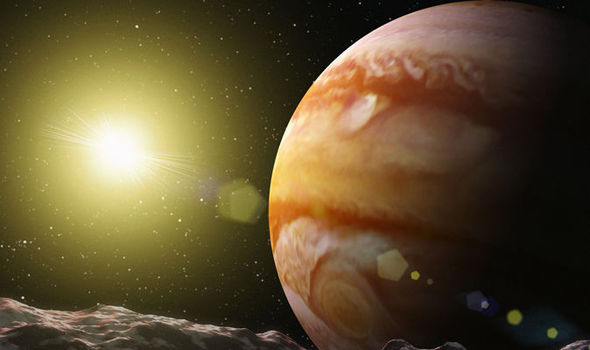inner planets from potentially catastrophic comet and asteroid collisions and
is our solar system’s fifth planet from the Sun, is far more unusual than
you’ve ever imagined.
Because the gas giant is so massive, it does not orbit the
Sun. Jupiter has a mass 2.5 times that of all the other planets in our solar
system put together. This indicates that the gas giant is so massive that the
center of gravity between Jupiter and the Sun is a point in space just above
our Sun’s surface, rather than within the Sun. And there’s a perfectly logical
reason for that.
When a smaller object circles a larger one, it does not go
in a circle around the larger one. Rather, both of these objects circle a
‘shared’ center of Gravity, which means they meet at the exact center.
However, Jupiter is unique. Because the gas giant is so
massive, its center of mass is exactly 1.07 solar radii from the Sun’s core–
about 7% of a sun radius over the Sun’s surface.
And this NASA GIF (not to scale) explains the effect:
The gas giant is so massive (estimated to be 143,000
kilometers wide) that it might consume all of our solar system’s known planets.
In reality, the gas giant can hold about 1,300 Earths. Our
planet’s gravitational center is so close to the Suns that this effect is minimal.
As a result, the larger object (the Sun) appears to be stationary, while the
smaller object (the Earth) orbits it.
All of the other planets in our solar system, including
Mercury, Venus, and even Saturn, have their centers of mass deep within the
Sun.



